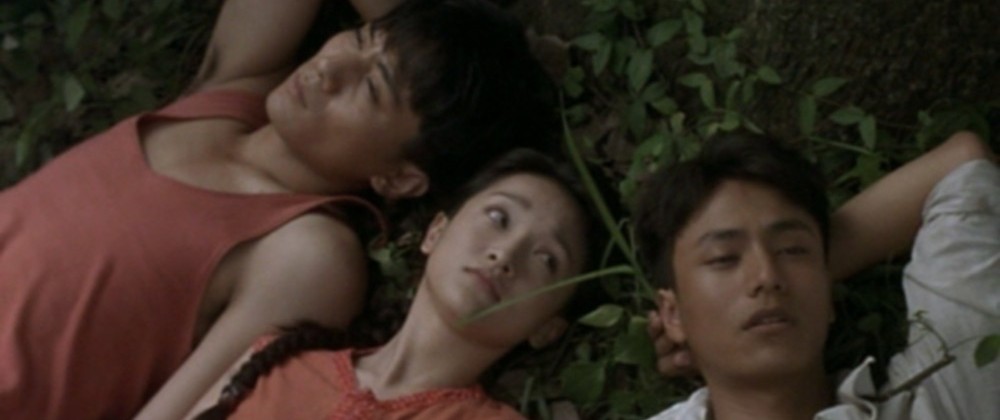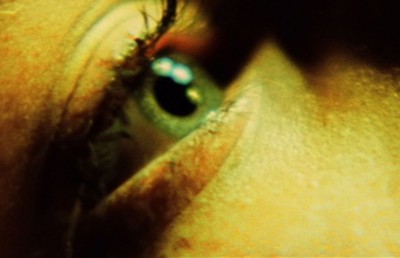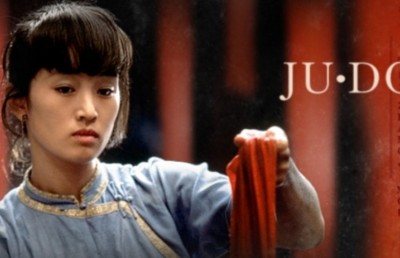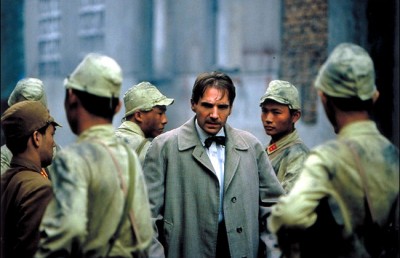And Always Searching for Beauty: Balzac and the Little Chinese Seamstress
The Chinese Cultural Revolution

You are not my idea of perfection, and I am not yours: something we are, or something we do, makes us not quite right. Some people fear knowledge, others ignorance; and some fear change, others tradition. Our history or our present incarnation may unfit us for other people’s fantasies. Our complexities make it impossible to be the simple answer to anyone’s ideology or prayer. Yet, the dream that something can transform us so that we can become ideal still breathes in us and in others—it is a dream that is willing to accept other deaths, even flesh and blood deaths, before it accepts its own. I am reminded of this when I read about educated people being targeted for execution by religious leaders and military forces in Iraq, when I read about young homosexual men being accused of erroneous charges, quickly tried, and killed in Iran, and when I think of the Chinese Cultural Revolution that the film Balzac and the Little Chinese Seamstress presents.
The history that precedes Balzac and the Little Chinese Seamstress is the rise of Communism in Russia and China; following a civil war in China, the People’s Republic of China was formed on October 1, 1949. The reign of Mao Zedong was marked by disasters natural and unnatural, and by genuine achievement, such as ridding the country of foreign dominance. Fearing the return of traditional Chinese elites, Mao (1893-1976) wanted the young to experience peasant life and sent many people to be re-educated in the country. He recognized that mind and spirit, not simply the management of material (financial, manufacturing) life, must be changed: but can people be forced into positive spiritual change? The Cultural Revolution lasted from 1966 to 1976. The young were organized into Red Guards; and these guards were later responsible for the harassment and even murder of older people and of intellectuals and professionals. Social life and the economics of the cities were affected. Is the meaning of killing someone for who he or she is, or what he or she thinks, changed by the politics of the killers, whether the killers are considered progressive or reactionary? Mao wanted to destroy old ideas, culture, customs and habits; however, new culture must have a foundation if it is not merely to be a reflection of impulse and ignorance. Art, books, and temples were destroyed. Mao ordered military takeover of various public and social institutions, including schools. Citizens were exiled, imprisoned, executed. By the time people affiliated with Mao suffered, many began to see what was happening not as ideological but as a recognizable, traditional struggle over personal power. I recall now a young Chinese woman telling me twenty-five years ago about life in China and referring to the Cultural Revolution, a phrase at which I—ignorantly—smiled: I wince to think of how recent that history had been to her and of what I did not know. What established authority may prefer we forget or never learn, art remembers.
In Balzac and the Little Chinese Seamstress, written by Dai Sijie and Nadine Perront (based on Dai’s novel of the same name) and directed by Dai, young men climb mountain steps: natural movement, an arduous task, a lovely vista; and already we know we are in the realm of the unusual. The young men meet the village chief and area peasants (the chief refers to them as revolutionary peasants); and the chief is wary of books and of one of the young men’s violin. To stop destruction of it, one of the young men, Ma (Ye Liu), plays it—and the chief is told the music is called “Mozart is Thinking of Mao,” a ludicrously ahistorical assertion which success is made possible by the ignorance of the chief and peasants. The recipe book one of the young men carries is thrown into a fire (“We don’t need to corrupt revolutionary peasants with your bourgeois chicken,” the chief says, though several of the peasants are interested in the recipe that’s read aloud). Ma and Luo are there to repudiate bourgeois consciousness—individuality, intellectuality; and one of their tasks is to carry large barrels of excrement on their backs to the fields for use as fertilizer: nasty, necessary, and humiliating work. (Poverty means that the past is never past; and the resources of modernity are either a dream or unimaginable.) The young men’s clock—a sign of civilization; an instrument of practicality—helps them to wake and then also the villagers; it readjusts the workday of all. One of the young men’s pleasures, other than each other’s company and understanding, is going to a local spring to watch young women bathe. While watching, one of the young men falls into a hole—is that symbolic of love; or of the female form?—and the girls tease but forgive him, and his friend helps him out. A tailor (Zhijun Cong) and his daughter (Xun Zhou) arrive; and the tailor looks old enough to be her grandfather. (He is her father in the novel, and I think is introduced as such in the film—though one of the translation subtitles might have referred to him as her grandfather, and certainly some film viewers think that is who he is.) Luo meets the girl, the little seamstress, who notices the clock. She is curious about it (she’s told that a feathered crowing creature is inside, possibly an attempt to play on supposed superstition); and she and her friends take it apart to see what’s inside, a sensible though destructive inquiry. The little seamstress talks of seeing airplanes overhead as she works (she carves airplanes); and she says that her mother, a teacher, died before teaching her to read. Luo (Kun Chen) offers to teach her to read. Luo will describe this as a project to his friend, Ma; and there’s something both generous and arrogant in the offer—he’s undertaking to change her as if she were an experiment; and genuine experiments have unpredictable results. His friend, Ma, asks for one of the planes she has carved; and gets it.
Another young man there, called Four-Eyes for his prominent eyeglasses, criticizes his own intellectual parents and affirms farm life; and he is held up as an example of successful re-education (the villagers do not know he will be getting a job with a magazine after he leaves; this mountain retreat has interrupted his life, not changed it). Luo and Ma are asked to visit a nearby town and see “revolutionary” films and report to the village on what they’ve seen, the first being a Korean film. Luo and Ma are excellent storytellers, and turn the retelling into theater. Luo and Ma hear from the little seamstress that Four-Eyes has foreign literature, great novels, and they ask him for the books but he says he threw them away. They do not believe him; and the seamstress suggests stealing the books, which the boys plan to do during a public celebration attended by Four-Eyes’ mother. (The celebration could have been an opportunity for the filmmakers to suggest the carnivalesque: the imaginative, sensual, and willful impulses of the peasants that go unexpressed. Are the peasants so disciplined that these impulses are not ever expressed?) Four-Eyes, who once tended and worked a bull, aids Luo and Ma’s theft by becoming sick on the bull’s blood he drank—he’s distracted. He has hidden great literature beneath the political propaganda in his suitcase. The books include Balzac’s Cousin Bette, Stendhal’s The Red and the Black, Dostoyevsky’s Crime and Punishment, and a Chinese novel, Dream of the Red Pavilion. Also known as Dream of the Red Chamber, and A Dream of Red Mansions, the last book is considered by many to be the greatest novel in Chinese literature, and it is about four powerful families but also gives a broad view of society and features a love story. China had one of the great civilizations, marked by the development of paper and printing, literature, art, music, manners, and such items as silk, porcelain, gunpowder, and the cultivation of apricots, peaches, and other plants, and also the mining of coal and zinc. I was curious about why there wasn’t more Chinese literature valued in the film, but the director’s earlier film, China, My Sorrow, of 1989, dealt with the preservation of self and Chinese culture; and I’ve read that, whereas traditional Chinese literature often dealt with royalty or socially distinguished people, western literature is appreciated for its respect for everyday life and personal being. When Luo and Ma begin reading to the young woman, the reading is transformative for her but also for them.
When Luo becomes sick, he has fever and chills, and it is thought he has malaria—and the cure includes being dumped into water and also whipped. We see the limits of peasant life; and soon see the resourcefulness of the boys. Asked to recount an Albanian film, the boys substitute a story by Balzac. One of them turns the hands of a clock forward to bring their workday to a quicker end. The seamstress’s father burns Old Goriot; and he asks Luo to stop reading to her, fearful of its effects, which include changing attitudes and new tastes in clothing. Someone says that a savage only has feelings; and a civilized man has feelings and ideas. However when the tailor is himself told the story of The Count of Monte Cristo, it inspires the clothes he makes. That’s not entirely surprising—being a tailor involves not only skill but imagination, just as being a teacher, the little seamstress’s mother’s profession, involves regard for knowledge: a tailor father or grandfather and a teacher mother make it likely that the seamstress would be open to something new. Would most of the peasants be closed to knowledge? I can imagine that while young peasants might be skeptical about education, older peasants would understand how not having a formal education had hindered them. Luo, whose father is a dentist, is asked to repair the chief’s tooth; and Luo constructs a drill powered by a sewing machine and makes, with the help of Ma and the seamstress, a filling out of melted tin. This is admirable and comic—and successful. (After there’s a coal mine crash and the chief is bedridden there is a time of freedom.) When Luo receives news that his father is sick, he gets to leave for a time, of about two months. The seamstress dives into water and gets a turtle as part of a going away ritual and is snakebit and the boys help her. Luo asks Ma to see her while he’s gone; and Ma reads Madame Bovary to her. When the seamstress says that she’s pregnant by Luo, Ma arranges for her to have an abortion (he bribes the doctor with a French novel). The abortion scene is charged with the fear of discovery and the tender attention of the doctor and of Ma, who plays violin to cover any moaning or screaming. Ma sells his violin and gives her a large part of the money to buy something for herself (he too is infatuated with her, but respectful).
The film then takes us to an older Ma: a violinist in Paris, he learns that a dam project, the Three Gorges Dam, will flood the area where his re-education took place. Ma decides to visit. The house where he stayed is occupied by other people; and there’s a satellite dish outside. (We learn that he lived there in the early 1970s: 1971-1974; and that is historically specific, though the story we’ve seen also seems timeless.) There’s a feast of the spirits, in which little boats with dead people’s names are lit and set to float on the water. Ma wades into the water to see if the seamstress’s name is written on any of them.
Ma travels on. His old friend Luo meets him; and Luo is now a dentist and a prominent academic. They remember the past.
We then see the leave-taking, years before, of the little seamstress: dressed in blouse, pants, and sneakers she walks down the mountain trail we saw at the beginning of the film. “Who changed you?” asks Luo. “Balzac,” she says. Luo tells Ma he searched for her; and heard that in 1982 she went to Hong Kong. Was she liberated or lost in the city? In the University of Hawaii Press book Transnational Chinese Cinemas: Identity, Nationhood, Gender, Yi Zheng writes that Chinese women have been identified with tradition and expected to sacrifice themselves; but the seamstress refuses the will of her father and her lover, refuses a tradition: however in seeking her fate alone and in the city she joins another tradition, or other traditions—modern, feminist. After the two friends Luo and Ma remember the little Chinese seamstress and their time together, we see the flooding of the area where they had met her; we see the three of them, young, and looking as if they are underwater—in the wash of a browning memory.
The film’s images are rich without seeming artificial or being overwhelming, and its rhythms are focused, gentle, and thoughtful, never boring—and its story of friendship, love, change, politics, and art is one that is ageless. This is history, personal and social, but it is also about the feelings and imagination that are part of being alive and aware. The actors playing the two young men, Ye Liu as Ma and Kun Chen as Luo, project personality—intelligence, sensitivity, self-respect, decency, practicality, humility—that makes macho heroics unlikely and unnecessary (such heroics are false, though they are also common in film and awkwardly attempted in life). The young men, like the young woman playing the little Chinese seamstress, Xun Zhou, each have a sweetness that is easily likable. When Ma cries after arranging an abortion for the seamstress, his tears are unexplained and understandable. Xun Zhou seems innocent, entirely without guile when she is first introduced; and by the last time we see her, when she has decided to leave the village, she has become more determined, more private, more thoughtful: experienced; an individual. The history of how a society’s good intentions can cause havoc in people’s lives—whether through ideological domination, forced labor, violence, or public projects such as the building of a dam—is one that this movie treats, and reveals, as a classic theme. The things that are often overlooked as history is made—individual being, the expanse of personal destinies—are what art preserves.
Yet, we could learn more about the lead characters than we do. Are there complexities or contrary attitudes we do not see? Do the young men ever say or do anything that is too coldly intellectual, or too demanding of personal privilege? Do they ever feel sorry for themselves, ever feel that the work they do is far beneath them? Does the young seamstress ever say or do anything that embodies to the young men the unforgivable backwardness of the countryside? (The novel, which I have visited rather than lived in, is told mostly from Ma’s perspective, and there the boys’ pride and judgments are more explicit. Luo first thinks the girl is too uncivilized for him; he tells Ma that. Words express—precisely; and whereas in the film we perceive the young men’s discomfort during some of their labors, _in the book we know_—as we are told—how much they hated carrying the back barrels of excrement.) Are the other villagers, the peasants, involved in activities or relationships of an intriguing personal nature? Have their experiences given them a serenity or a bitterness that could be hard for a sophisticated stranger to tolerate? They are referred to as revolutionary peasants, but nothing they do strikes me as radical or revolutionary. I have known peasants but none of them were revolutionary; and I have not met very many workers who had any radical consciousness. I have met a lot of untransformed poor people—people who were dangerous to themselves and to others. Balzac and the Little Chinese Seamstress does not make a complete inquiry, or use its full force, in exploring the danger that people with limited experience and without resources can be, nor does the film examine the national authorities—corrupt, deluded, or indifferent—for which most workers toil: and yet I have no sustained quarrel with the film. It is a lovely and thoughtful film.
A.O. Scott, who describes the Chinese Cultural Revolution in his July 29, 2005 New York Times review of Dai Sijie’s Balzac and the Little Chinese Seamstress as having “earned a special place in the annals of monstrous modern ideological experiments, not only for its cruelty but also for its absurdity,” notes that “there is very little bitterness in his reconstruction of the Cultural Revolution, but rather a sense of resilience touched with sentimentality, and a suffusing fondness for youth, beauty and literature,” and that the film associates great western works with “with love, pleasure and individuality, which are all anathema to regimes that try to impose an abstract ideal of collective human perfection on their subjects.”
In his August 1, 2005 New York Observer commentary on the film, Andrew Sarris wrote, “I couldn’t help but be struck by the irony of the Herculean efforts undertaken by these characters to circumvent the authorities—all to avail themselves of literary treasures sitting unread by young people in America today in libraries across the country.” He also concluded, “There is more than a little pain in this film, but there is also much compassion, love and forgiveness. Its well-earned humanistic frissons should serve as a wake-up call for the great majority of American movies, with their inexhaustible supply of smugness and complacency—but it probably won’t. Don’t miss Balzac and the Little Chinese Seamstress. It will reverberate like an emotional echo on a mountainside.”
Those are two understanding—appreciative, deep, intelligent—comments by significant film reviewers whose responses I do not always share, but I discovered what I consider a reprehensible opinion when reading The Indypendent, a small newspaper that advocates independent media and progressive causes, a project of the New York City Indymedia Center. In an article titled “Beware ‘Refinement’” in the July 21-August 10, 2005 issue (page 14), Diane Mason began by stating that “The problem with the new Chinese film Balzac and the Little Chinese Seamstress, based on the international best-seller by Dai Sijie, is that it glorifies refinement, and the bourgeois brand of European refinement at that.” She accuses the film of trivializing the Cultural Revolution, and referred to the film’s detailing of the young men’s trouble as part of what she called the grievance literature of the formerly privileged. “History is told by isolated anecdote,” Mason complains. Diane Mason seems to want a more didactic film—but a more didactic film would probably not be art. The facts of history can be researched in a good library—and film, which gives us not merely facts and ideas, conveys experience, an experience that can make such research seem important. What is most disturbing to me is when Mason declares:
The bourgeois world was horrified at the Cultural Revolution. And sure, discomfort and even great suffering can ensue from how ‘unwashed masses’ deal with their former rulers when given power over them. But why should we be horrified when we barely bat an eyelash over the mass impoverishment and degradation that precipitate rebellion in the first place?
That reads to me like evasion of acknowledgement of the torture and murders committed during the Chinese Cultural Revolution, indifference to real pain, and a justification for the lack of rigorous ethics: the writer seems to be saying (as Sister Souljah, on the recording 360 Degrees of Power, once did) that “two wrongs don’t make a right, but it damn sure makes it even.” I must admit that I’ve used similar reasoning regarding other matters—there’s nothing like quotation—or dramatic rendering, as in film—to increase the shock of recognition. We—arguably—should, or at least could, object to all injustice, to all violence; and what art can do is increase our sensitivity so that we do object.
The Maoist Internationalist Movement in an article, “Myths about Maoism,” available online and published as part of its MIM Notes 40, March 4, 1990, though circulated previously, also makes excuses for the abuse and killing of people. The article—which I read August 10, 2005—notes drought and famine as cause of some deaths. It admits that “Mao did claim government responsibility for 800,000 executions between 1949 and 1954. These were popularly sanctioned executions done in people’s trials against the most hated landlords and pro-Japanese (pro-imperialist) elements who had terrorized the masses during World War II and its aftermath.” I don’t think shared hatred is a justification for murder. The article states, “While it is possible that there were millions of deaths during the Cultural Revolution, they were not ordered by Mao. Mao explicitly ordered that the Cultural Revolution be non-violent.” (Analogously, does this mean that because President Bush has issued public statements about the need to respect Islam and its practitioners, that the targeting of Muslims for arrest, detainment, and torture by military and police forces under his command cannot be attributed to his policies or presumed to be his official responsibility?)
As in the Diane Mason/_Indypendent_ article, the Maoist Internationalist Movement article discusses education, gratuitously using words such as imperialist and bourgeois as if they were curses or shocking sins (one hears a childish, wounded resentment in those words): “Westerners define ‘real’ education as that which resembles Western educational topics and agendas; i.e., studying history and literature from the point of view of the oppressors and imperialists, mathematics/science with the goal of research toward technological or medical advances that increase the wealth and power of the ruling classes, and studying to the point of expertise and academic status but without emphasis on practical experiences or usefulness for the community.” That is pure rhetoric and does not resemble the American colleges at which I’ve studied, read about, or have heard discussed by students, graduates, teachers, or informed observers: in the last forty years, the diversity of the American citizenry, organized in the form of student groups and political movements, has had an impact. That impact hasn’t rendered universities perfect, but it has meant that the concerns and issues that are faced outside their doors can be discussed also within—with logic, research, and even sympathy. The Maoist Internationalist Movement article goes on to say that Mao wished to be remembered as a teacher—which is very sweet. The article then foolishly goes on to quote Mao as saying that doctors didn’t need to read so many books. It’s obvious that for activists who despise culture and religion, political leaders are their stars, their saints, their charismatic figures, and they are as discomfited as any fan club or church when their hero is criticized.
The decade (1966-1976) of the Cultural Revolution in the People’s Republic of China affected life and art, particularly film. China had an old tradition of film screening: the first film exhibited in China was screened in 1896; and films were shown in teahouses and theaters and compared in the public mind with traditional Chinese shadow-plays. Mainland China, Hong Kong, and Taiwan, three Chinas, have contributed to what is thought of as Chinese cinema. Yingjin Zhang in the book Chinese National Cinema (Routledge, New York, 2004) wrote on page 217: “Insomuch as cinema is concerned, feature production was suspended from 1967 to 1969. A total of 589 features and over 1,000 documentary, animation and educational titles that had been produced in the preceding seventeen years, as well as 883 foreign features, were sealed and stored. Production, distribution and exhibition personnel were dismissed and dispatched elsewhere. During the decade, only seventy-nine features were distributed, including six remakes and thirty-six foreign titles. Under the deranged circumstances, nationwide exhibition incurred a deficit of over RMB20 million between 1974 and 1976, and this period was the time when the new features were released.”
The Cultural Revolution was condemned by the subsequent Chinese government, which itself became involved in the violent repression of students. China has changed but not enough; and it has allowed the market to affect its economy, allowing some foreign trade and investment; and, while it is in many ways poor, it has the second largest economy in the world. Its system is marked by bureaucracy and lassitude, growing income disparities and rising unemployment, according to The CIA World Factbook, as of August 10, 2005. Since 1990 various Chinese directors—among them, Chen Kaige, Zhang Yimou, Wong Kar-Wai, Stanley Kwan, Edward Yang, Ang Lee, and Joan Chen—have made films that have won international attention, contributions to a transnational cinema. Freedom of speech is still not allowed in China: evidenced not only by the massacre in Tiananmen Square but by the fact that the film Balzac and the Little Chinese Seamstress now cannot be shown there.
It’s a shame, as the film has a generous spirit and one can imagine more corrosive introductions to, or interpretations of, the subject of the Cultural Revolution; and the film inspires one to learn more about China and the Chinese people. _The Los Angeles Times_’s Carina Chocano in an August 26, 2005 review wrote that, “The parallels between Luo and Ma’s official (and, of course, failed) political conversion and the Little Seamstress’ fortuitous intellectual and sexual awakening are handled, not surprisingly, without a trace of dogmatism.” Chocano explains that “Dai has a humanistic, not political, agenda (the movie is a love song to the universal appeal of great literature), and he’s so attuned to the ironies inherent in these curious cultural exchanges that they permeate every inch of the film like a dense mist. A subtle, tender humor pervades the boys’ attempts to influence the villagers’ values and way of thinking, and vice versa.”
It’s noteworthy that Balzac and the Little Chinese Seamstress, an obviously remarkable film, was made several years ago and is only now reaching American theaters; and such a gap in time between creation and distribution is not unusual with foreign films, leaving one to wonder how perception of film development and tradition—and also representation of life on the planet—is affected by such things. Balzac and the Little Chinese Seamstress was screened at the Cannes film festival in May 2002, and released that year in France, where its director Dai Sijie lives; and Variety_’s David Stratton, in a _Variety.com review posted May 17, 2002, possibly cynically, possibly not having known the term transnational cinema, saw the film as belonging to a western film tradition: “The film is a very romanticized view of a harsh period in recent Chinese history, and the casting of three beautiful young actors in the leading roles only emphasizes the air of unreality, despite the authentic locations used. This is basically the stuff of a traditional Hollywood, or French, melodrama—two guys in love with the same innocent girl, separation, loss—and then a coda in which, years later, the men meet and wonder whatever happened to the girl they once loved.”
Film gives us a distinct sense of history, and even of time, by filling our consciousness with more perspectives and places than we could provide ourselves; and sometimes film criticism is less the exegesis of a cinema text than the examination of one’s memory of perceptions of a film: rather than taking apart a material thing such as a clock, it can be like trying to dissect an impression. Impressions do matter—they build on one another and are transformed into a feeling or idea. One idea that occurs to me after watching the film is that if one wants the best for someone, whether friend or unknown peasant, one probably wants his work made easier, his health preserved, his pleasures more intense and plentiful, his knowledge greater and his choices many.
Balzac and the Little Chinese Seamstress is a kind of true-life fable, and it offers lessons in survival, knowledge, beauty, and joy: the film has given us a vision of hope where it might have given us a vision of horror.
PS: This review essay was submitted to Offscreen on September 3, 2005













